Gem Profile- Pearls
Pearls - Creation, Cultivation and Care
Saltwater and Freshwater
Just recently we talked about Mother of Pearl and the different types of mollusks or invertebrates we use for Mother of Pearl. Last year about this time Rose also wrote an article on the historical uses and value of Pearls. This week, we'll go a little deeper into the world of pearls and talk more about their creation, cultivation and care.
Saltwater and Freshwater
Just recently we talked about Mother of Pearl and the different types of mollusks or invertebrates we use for Mother of Pearl. Last year about this time Rose also wrote an article on the historical uses and value of Pearls. This week, we'll go a little deeper into the world of pearls and talk more about their creation, cultivation and care.
What are Pearls?
In nature, the creation of a pearl is very rare event. It is caused by a foreign object getting into the body of the mussel or oyster causing the animal to coat the object with nacre which creates a pearl. Man has taken this process to the next level by cultivating pearls within the oysters on farms. These farms are located in saltwater bays where the oysters live on ropes which are hung below floating docks. The temperature of the water is monitored constantly and the oysters are raised and lowered to keep them at the correct temperature at all times. They are also fed an optimum mixture of algae and nutrients to keep them healthy. Once a year, they are pulled from the water, their shells cleaned and treated with anti-fungal solution and put back in the water to finish growing.
Pictured: A pearl being extracted from an Akoya pearl oyster.
In nature, the creation of a pearl is very rare event. It is caused by a foreign object getting into the body of the mussel or oyster causing the animal to coat the object with nacre which creates a pearl. Man has taken this process to the next level by cultivating pearls within the oysters on farms. These farms are located in saltwater bays where the oysters live on ropes which are hung below floating docks. The temperature of the water is monitored constantly and the oysters are raised and lowered to keep them at the correct temperature at all times. They are also fed an optimum mixture of algae and nutrients to keep them healthy. Once a year, they are pulled from the water, their shells cleaned and treated with anti-fungal solution and put back in the water to finish growing.
Pictured: A pearl being extracted from an Akoya pearl oyster.

Cultivation:
Millions of oysters are nucleated every year with surgical-like precision, but only a small percentage actually create a pearl with many succumbing to disease or environmental problems like red tide, or too much freshwater being trapped in the bays.
It takes between 10 - 18 months to develop a pearl, the longer the oyster is left in the water, the larger the pearl becomes. Each year only about 20% of the oysters actually create pearls suitable for market. Today there are nearly 2000 oyster farms in Japan creating these beautiful gems using the method developed over 100 years ago.
Pictured: Pearl Nuclei from Toba Pearl Island, Japan
Millions of oysters are nucleated every year with surgical-like precision, but only a small percentage actually create a pearl with many succumbing to disease or environmental problems like red tide, or too much freshwater being trapped in the bays.
It takes between 10 - 18 months to develop a pearl, the longer the oyster is left in the water, the larger the pearl becomes. Each year only about 20% of the oysters actually create pearls suitable for market. Today there are nearly 2000 oyster farms in Japan creating these beautiful gems using the method developed over 100 years ago.
Pictured: Pearl Nuclei from Toba Pearl Island, Japan

Saltwater Pearls:
South Seas Pearls are another type of saltwater pearls and are created in the white-lipped Pinctada maxima oyster. These pearls grow over a 2-3 year period and are exceptionally beautiful and rare. The Pinctada maxima is a wild oyster that is collected by pearl divers in water ranging from 10 - 80 meters deep. Some divers, like those in the Philippines, don't use any equipment opting to "free dive" for the mature oysters. Once the healthy oysters are found, they are isolated in bays, nucleated and then placed at the bottom of the bay to grow. After several months, the Pinctada maxima is x-rayed to make sure the nucleus has not been rejected. If the nucleus is still within the shell, the oyster is then placed back in the bay for 2 -3 years while the pearl forms. Once a Pinctada maxima has developed a pearl, a farmer will carefully remove it and insert another nuclei. Healthy Pinctada maxima can be nucleated up to 4 times over its lifespan.
Pictured: Pinctada maxima oyster
South Seas Pearls are another type of saltwater pearls and are created in the white-lipped Pinctada maxima oyster. These pearls grow over a 2-3 year period and are exceptionally beautiful and rare. The Pinctada maxima is a wild oyster that is collected by pearl divers in water ranging from 10 - 80 meters deep. Some divers, like those in the Philippines, don't use any equipment opting to "free dive" for the mature oysters. Once the healthy oysters are found, they are isolated in bays, nucleated and then placed at the bottom of the bay to grow. After several months, the Pinctada maxima is x-rayed to make sure the nucleus has not been rejected. If the nucleus is still within the shell, the oyster is then placed back in the bay for 2 -3 years while the pearl forms. Once a Pinctada maxima has developed a pearl, a farmer will carefully remove it and insert another nuclei. Healthy Pinctada maxima can be nucleated up to 4 times over its lifespan.
Pictured: Pinctada maxima oyster

Another type of pearl is the Tahitian pearl which comes from the black lipped Pinctada margaritifera. These are large oysters, almost twice the size of those used in Japan, and produce dark-colored pearls, often known as "black pearls" with an almost metallic luster. These oysters are raised on farms from youth through maturity and then are cultured in the same manner as South Seas pearls.
Ring of Tahitian Pearl and A black pearl and a shell of the black-lipped pearl oyster. The iridescent colors originate from nacre layers.
Ring of Tahitian Pearl and A black pearl and a shell of the black-lipped pearl oyster. The iridescent colors originate from nacre layers.


Freshwater Pearls:
Freshwater pearls are cultivated in much the same way as salt water pearls only using freshwater mussels instead of oysters. Many archeological sites throughout the Mississippi River basin and the Eastern United States have yielded evidence that the native inhabitants valued pearls for adornment and even trade.
There is a record of the explorer Hernando Desoto in the 1540's describing the Native Americans as wearing pearls "as big as filberts." The "queen pearl" was discovered in New Jersey in 1857 and is a large pink, perfectly round pearl from a freshwater mussel. This pearl was eventually sold to the Empress of France. Quite the reputation for a lowly little river mussel! Over the next several decades, freshwater pearls were harvested and sold, nearly decimating the population of mussels in the rivers and lakes of North America.
A lovely bracelet made by Robin Pacey with freshwater potato pearls with tiny peridot coin beads. Photo courtesy of Robin Pacey.
Freshwater pearls are cultivated in much the same way as salt water pearls only using freshwater mussels instead of oysters. Many archeological sites throughout the Mississippi River basin and the Eastern United States have yielded evidence that the native inhabitants valued pearls for adornment and even trade.
There is a record of the explorer Hernando Desoto in the 1540's describing the Native Americans as wearing pearls "as big as filberts." The "queen pearl" was discovered in New Jersey in 1857 and is a large pink, perfectly round pearl from a freshwater mussel. This pearl was eventually sold to the Empress of France. Quite the reputation for a lowly little river mussel! Over the next several decades, freshwater pearls were harvested and sold, nearly decimating the population of mussels in the rivers and lakes of North America.
A lovely bracelet made by Robin Pacey with freshwater potato pearls with tiny peridot coin beads. Photo courtesy of Robin Pacey.

The best of both worlds:
Much of the production of freshwater pearls was originally in the United States and Scotland, but when Kokichi Mikimoto began experimenting on the nucleation process, the production quickly moved to Japan and Lake Biwa. Through decades of trial and error, Mikimoto discovered that the best material for the nucleation of saltwater pearls is a piece of freshwater mussel shell and the best freshwater mussels come from North America.
Today, the production of freshwater pearls and shells in North America is undertaken by over 30 farms in various states, the first of which was the Latendresse farm in Tennessee during the 1960's. Now these farms not only produce American freshwater pearls, but shells for nucleation of saltwater oysters. So literally, the beautiful salt water pearl you are wearing from the South Seas or Asia has a bit of North America inside it.
Wire wrapped necklace by Ruth Soucek with freshwater pearls. Photo courtesy of Ruth Soucek.
Much of the production of freshwater pearls was originally in the United States and Scotland, but when Kokichi Mikimoto began experimenting on the nucleation process, the production quickly moved to Japan and Lake Biwa. Through decades of trial and error, Mikimoto discovered that the best material for the nucleation of saltwater pearls is a piece of freshwater mussel shell and the best freshwater mussels come from North America.
Today, the production of freshwater pearls and shells in North America is undertaken by over 30 farms in various states, the first of which was the Latendresse farm in Tennessee during the 1960's. Now these farms not only produce American freshwater pearls, but shells for nucleation of saltwater oysters. So literally, the beautiful salt water pearl you are wearing from the South Seas or Asia has a bit of North America inside it.
Wire wrapped necklace by Ruth Soucek with freshwater pearls. Photo courtesy of Ruth Soucek.

Handle with care:
Pearls are not only beautiful, but delicate as well. Our skin contains oil and acids that can degrade a pearl and change not only its luster, but its shape over time. When taking off your pearls, wipe them with a soft cloth to remove the oil and dirt from your skin. Never wear your pearls when exercising and always store them in a pouch or jewelry box, don't hang them to store. If you need to wash your pearls, only do so with a mild soap, not detergent, and use a soft cloth to dry them, don't wear until the thread is completely dry. NEVER place pearls in any type of ammonia or vinegar solution, ultrasonic or steam cleaners, or use any type of abrasives like a toothbrush to clean them. Remove your pearls to apply makeup, hairspray or perfume as the acids can degrade and ruin your pearls. If you wear your pearls often, it's a good idea to have them restrung every year or so.
Pearls are not only beautiful, but delicate as well. Our skin contains oil and acids that can degrade a pearl and change not only its luster, but its shape over time. When taking off your pearls, wipe them with a soft cloth to remove the oil and dirt from your skin. Never wear your pearls when exercising and always store them in a pouch or jewelry box, don't hang them to store. If you need to wash your pearls, only do so with a mild soap, not detergent, and use a soft cloth to dry them, don't wear until the thread is completely dry. NEVER place pearls in any type of ammonia or vinegar solution, ultrasonic or steam cleaners, or use any type of abrasives like a toothbrush to clean them. Remove your pearls to apply makeup, hairspray or perfume as the acids can degrade and ruin your pearls. If you wear your pearls often, it's a good idea to have them restrung every year or so.
Tying it all together!
Pearls, we learned have been valued throughout history for their beauty and rarity. Cleopatra was said to have won a bet with Mark Antony by dissolving a pearl in wine and drinking it; proving that she could consume the wealth of an entire nation in one meal. Pearls have been found in ancient burial sites and were even worn into battle by knights who thought the gems would provide protection. Pearls were also a large part of the expansion into the America's by the European's whose lust for the beautiful gem nearly caused the extinction of the American saltwater pearl oyster.
For nearly 200 years, pearls were available only to those who were royalty, wealthy or famous. Pearls were so valuable that in 1916 when Jacques Cartier opened his store in New York City, the property was purchased with two strands of pearls.
Today, pearls are accessible to more people of diverse economic backgrounds due in large part to the cultivation of pearl oysters.
Pearls available at Wirejewelry.com
Pearls, we learned have been valued throughout history for their beauty and rarity. Cleopatra was said to have won a bet with Mark Antony by dissolving a pearl in wine and drinking it; proving that she could consume the wealth of an entire nation in one meal. Pearls have been found in ancient burial sites and were even worn into battle by knights who thought the gems would provide protection. Pearls were also a large part of the expansion into the America's by the European's whose lust for the beautiful gem nearly caused the extinction of the American saltwater pearl oyster.
For nearly 200 years, pearls were available only to those who were royalty, wealthy or famous. Pearls were so valuable that in 1916 when Jacques Cartier opened his store in New York City, the property was purchased with two strands of pearls.
Today, pearls are accessible to more people of diverse economic backgrounds due in large part to the cultivation of pearl oysters.
Pearls available at Wirejewelry.com

Resources & Recommended Reading
What is a Mollusk? on https://molluskconservation.org
More history about Pearls on https://minerals.usgs.gov
What is a Mollusk? on https://molluskconservation.org
More history about Pearls on https://minerals.usgs.gov
Materials

Wire

Pearls

6-7mm Large Hole (1.2mm) Natural Double Shine Fresh Water Pearls - Pack of 20
A8-06
- Lesson Quantity: 1.00 pieces
- Purchase Quantity: 1.00 each
- Price: $15.37
- Gold Club Price: $11.53

Sterling Silver Chain w/ Pearls Silver Grey 8-8.5mm - 5 Feet
C8-195U
- Lesson Quantity: 1.00 pieces
- Purchase Quantity: 1.00 each
- Price: $102.47
- Gold Club Price: $76.85

Blue Mabe Pearl 9 to 11mm - Pack of 1
A8-911B
- Lesson Quantity: 1.00 pieces
- Purchase Quantity: 1.00 each
- Price: $6.47
- Gold Club Price: $4.85

Pink Mabe Pearl 12 to 14mm - Pack of 1
A8-1214P
- Lesson Quantity: 1.00 pieces
- Purchase Quantity: 1.00 each
- Price: $8.87
- Gold Club Price: $6.65

White Mabe Pearl 12 to 13mm - Pack of 1
A8-1213AW
- Lesson Quantity: 1.00 pieces
- Purchase Quantity: 1.00 each
- Price: $17.97
- Gold Club Price: $13.48
Tools

Beadalon Knotter Tool
G16-100
- G16-100
- Lesson Quantity: 1.00 pieces
- Purchase Quantity: 1.00 each
- Price: $28.95
- Gold Club Price: $21.71

WireJewelry - Ultimate Wire-Pliers Jewelry Pliers with Case, Set of 5
G15-20
- G15-20
- Lesson Quantity: 1.00 pieces
- Purchase Quantity: 1.00 each
- Price: $170.72
- Gold Club Price: $128.04

Bench Tools
- Category: General Education
- Technique(s): General Education







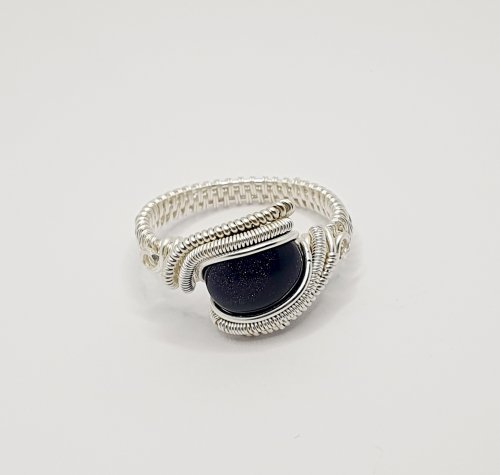
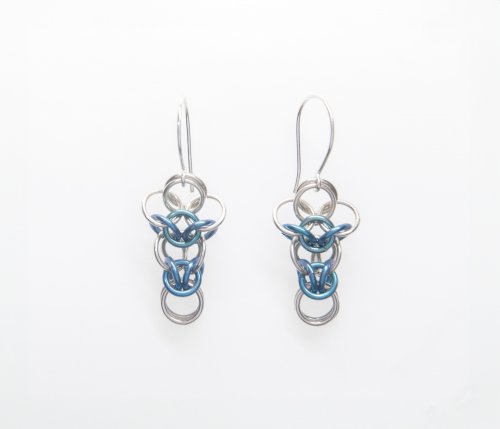
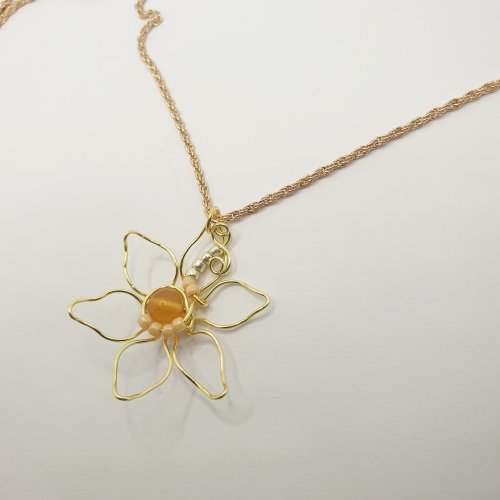

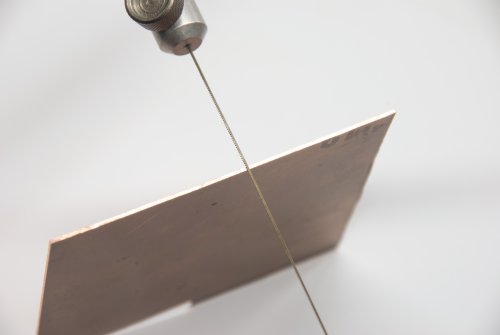
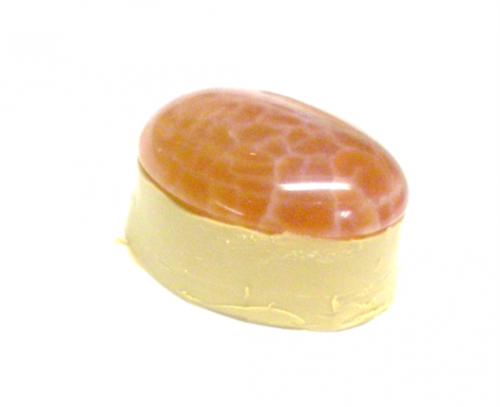
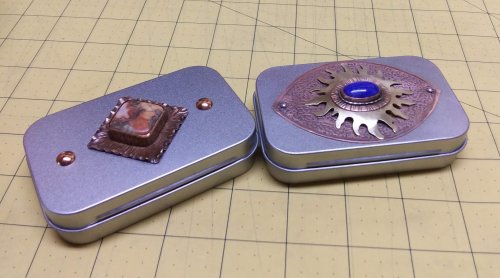
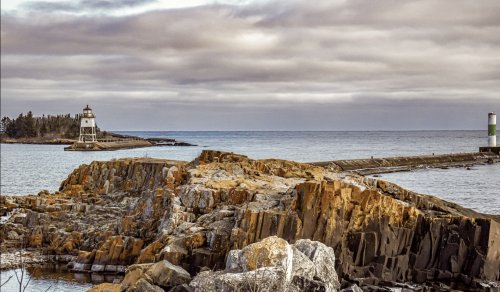
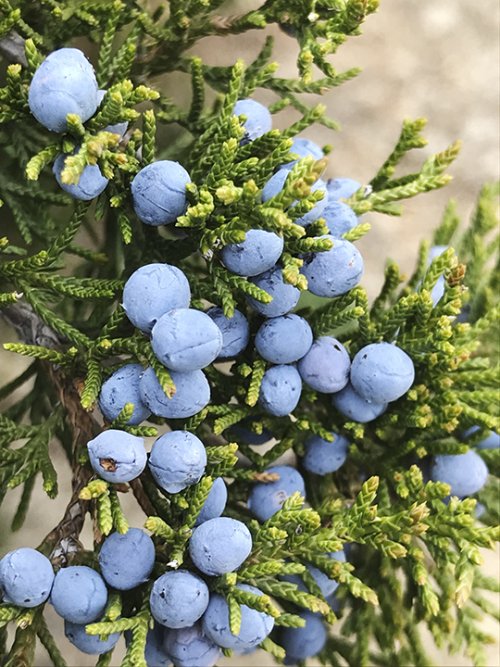
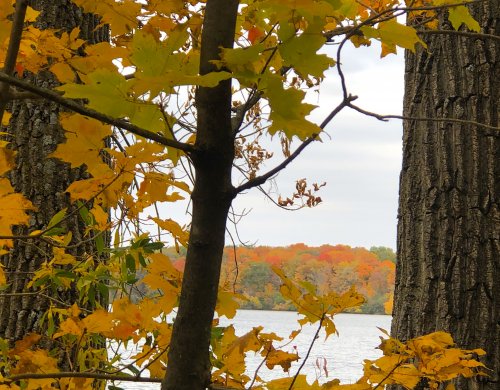

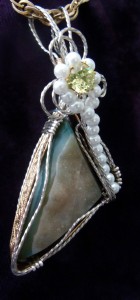

 About Jewelry Chain- About Ball Chain
About Jewelry Chain- About Ball Chain About Jewelry Chain- Snake Chain and Omega Chain
About Jewelry Chain- Snake Chain and Omega Chain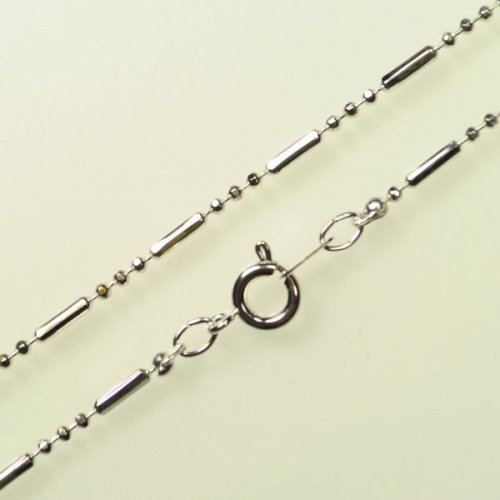 About Jewelry Chain- Bar Chain and Peanut Chain
About Jewelry Chain- Bar Chain and Peanut Chain About Jewelry Chain - Cable Chain and Rolo Chain
About Jewelry Chain - Cable Chain and Rolo Chain About Jewelry Chain- Curb Chain and Gourmette Chain
About Jewelry Chain- Curb Chain and Gourmette Chain About Jewelry Chain- Figaro Chain
About Jewelry Chain- Figaro Chain About Jewelry Chain- Infinity Chain and Anchor Chain
About Jewelry Chain- Infinity Chain and Anchor Chain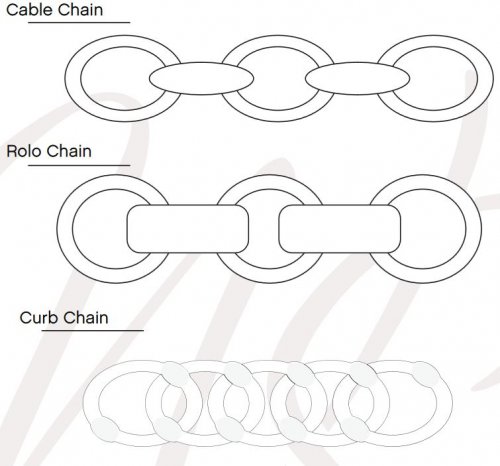 About Jewelry Chain- Chain Reference Sheet
About Jewelry Chain- Chain Reference Sheet About Jewelry Chain- Venetian Chain and Box Chain
About Jewelry Chain- Venetian Chain and Box Chain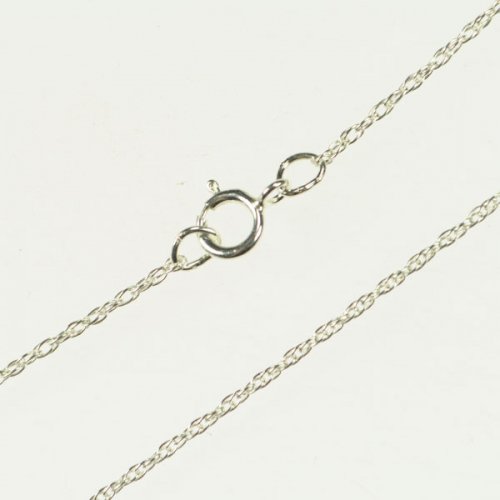 About Jewelry Chain- Wheat Chain and Rope Chain
About Jewelry Chain- Wheat Chain and Rope Chain Introduction to Chain
Introduction to Chain Access More Money by Making Jewelry When Your Prices Are Right
Access More Money by Making Jewelry When Your Prices Are Right An Introduction to Beads and Beading
An Introduction to Beads and Beading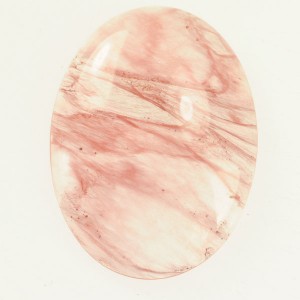 Common Gemstone Misconceptions
Common Gemstone Misconceptions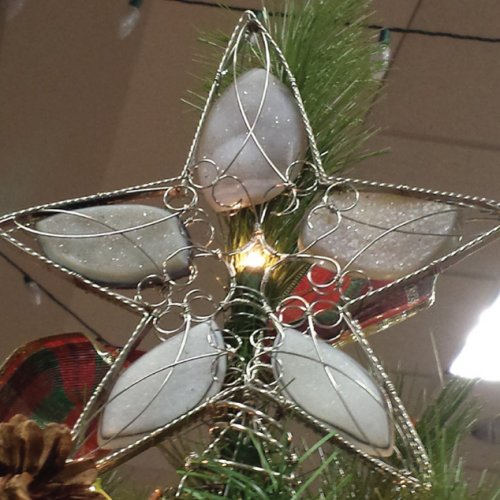 Wire Wrapped Christmas Tree
Wire Wrapped Christmas Tree How To Polish Metal Jewelry using a Rotary Tumbler
How To Polish Metal Jewelry using a Rotary Tumbler How To Polish Your Own Rocks using a Rotary Rock Tumbler
How To Polish Your Own Rocks using a Rotary Rock Tumbler How to Merchandise Your Jewelry on the Internet
How to Merchandise Your Jewelry on the Internet How to Use Twitter as a Wire Jewelry Artist
How to Use Twitter as a Wire Jewelry Artist 20 Ideas to get your Jewelry Biz Busy
20 Ideas to get your Jewelry Biz Busy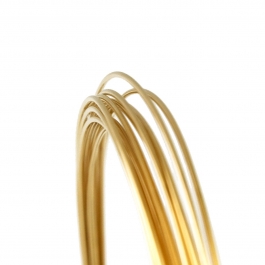 Watching the Precious Metals Market
Watching the Precious Metals Market Jewelry Design Ideas - Get Inspired
Jewelry Design Ideas - Get Inspired Measuring Tools
Measuring Tools July Birthstone - The Ruby
July Birthstone - The Ruby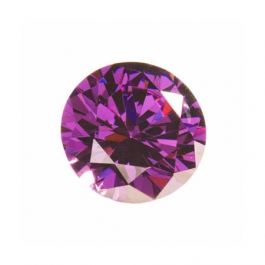 February Birthstone- Amethyst
February Birthstone- Amethyst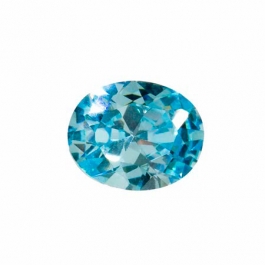 March Birthstone - Aquamarine and Bloodstone
March Birthstone - Aquamarine and Bloodstone September Birthstone - Sapphire
September Birthstone - Sapphire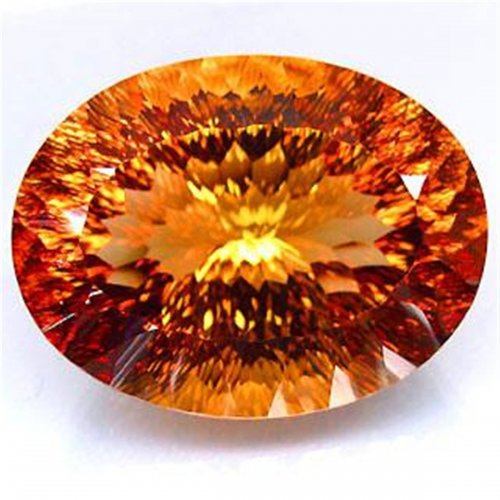 November Birthstones - Topaz and Citrine
November Birthstones - Topaz and Citrine October Birthstones - Rose Zircon, Pink Tourmaline and Opal
October Birthstones - Rose Zircon, Pink Tourmaline and Opal April Birthstone - The Diamond
April Birthstone - The Diamond August Birthstone - Peridot and Sardonyx
August Birthstone - Peridot and Sardonyx June Birthstones - Alexandrite, Pearl and Moonstone
June Birthstones - Alexandrite, Pearl and Moonstone Metalsmithing
Metalsmithing Featured Tool - Mini TruStrike Hammers
Featured Tool - Mini TruStrike Hammers Natural Jasper Stones - Cabochon Gemstones
Natural Jasper Stones - Cabochon Gemstones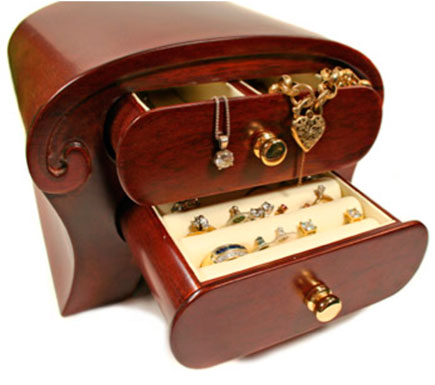 Organize Your Jewelry Box
Organize Your Jewelry Box Pearls- It's a Cultural Thing
Pearls- It's a Cultural Thing Soldering 101
Soldering 101 Starting Your Own Home Jewelry Business
Starting Your Own Home Jewelry Business The Art of Creating Chainmail
The Art of Creating Chainmail Why Should I Be Using Facebook
Why Should I Be Using Facebook Make Handmade Neck Cords on a Dime
Make Handmade Neck Cords on a Dime Tagging Handmade Jewelry Gifts
Tagging Handmade Jewelry Gifts Share Your Expertise with Your Community
Share Your Expertise with Your Community Creating Color Schemes for Jewelry Making
Creating Color Schemes for Jewelry Making Bronze, Brass, Nickel Silver and Copper Base Metals
Bronze, Brass, Nickel Silver and Copper Base Metals Gemstone Treatments
Gemstone Treatments How Wire is Made
How Wire is Made Beading A-B-C's
Beading A-B-C's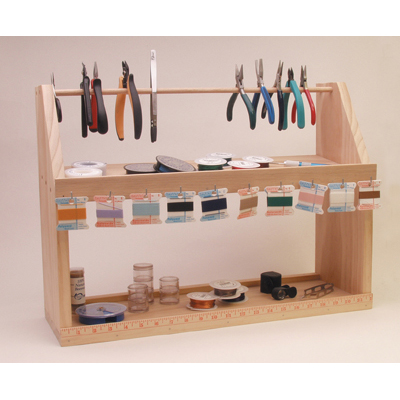 How to Set Up Your Workspace
How to Set Up Your Workspace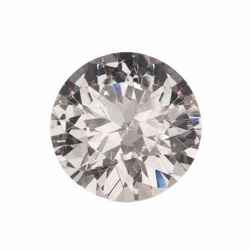 Gem Profile- Diamond
Gem Profile- Diamond Gem Profile- Peridot
Gem Profile- Peridot Gem Profile- Goldstone
Gem Profile- Goldstone Gem Profile- Cryptocrystalline Quartz Introduction
Gem Profile- Cryptocrystalline Quartz Introduction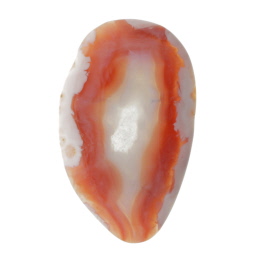 Gem Profile- Banded Agate and Brecciated Agate
Gem Profile- Banded Agate and Brecciated Agate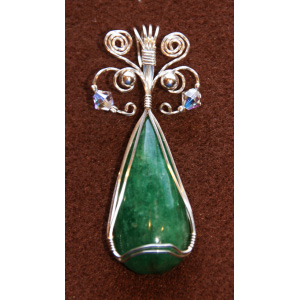 Gem Profile- Emerald
Gem Profile- Emerald Gem Profile- Titanite or Sphene
Gem Profile- Titanite or Sphene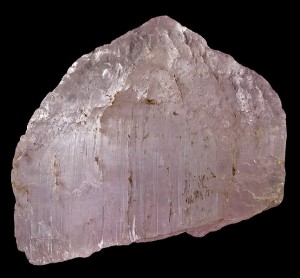 Gem Profile- Morganite
Gem Profile- Morganite Gem Profile- Desert Rose
Gem Profile- Desert Rose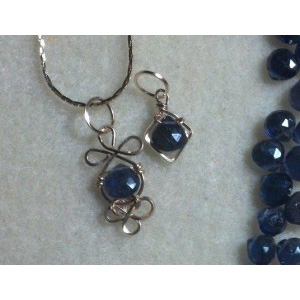 Gem Profile- Iolite
Gem Profile- Iolite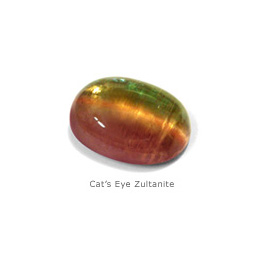 Gem Profile- Zultanite
Gem Profile- Zultanite Gem Profile- Maw Sit Sit
Gem Profile- Maw Sit Sit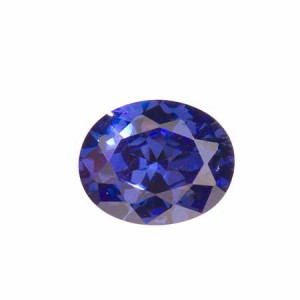 Gem Profile- Tanzanite
Gem Profile- Tanzanite Gem Profile- Aquamarine
Gem Profile- Aquamarine Gem Profile- Turquoise
Gem Profile- Turquoise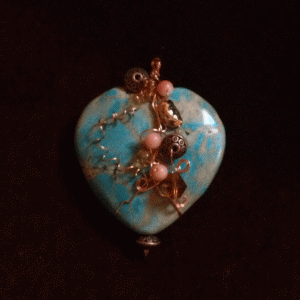 Gem Profile- Turquoise Types
Gem Profile- Turquoise Types Gem Profile- What's Druze
Gem Profile- What's Druze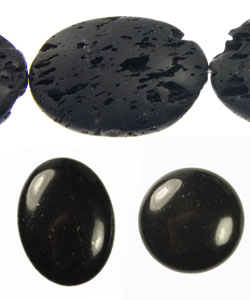 Gem Profile- Basalt
Gem Profile- Basalt Gem Profile- Fordite
Gem Profile- Fordite Gem Profile- Variscite
Gem Profile- Variscite Gem Profile- Onyx
Gem Profile- Onyx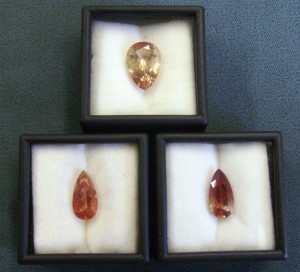 Gem Profile- Sunstone
Gem Profile- Sunstone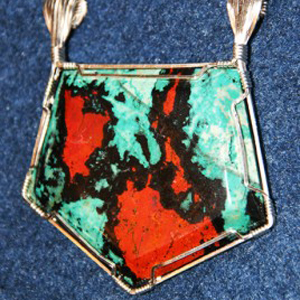 Gem Profile- Sonora Sunrise
Gem Profile- Sonora Sunrise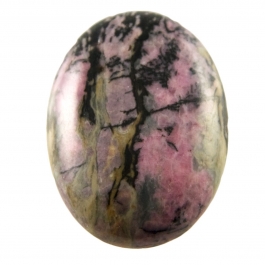 Gem Profile- Rhodonite
Gem Profile- Rhodonite Gem Profile- Glass, Crystal and Quartz
Gem Profile- Glass, Crystal and Quartz Gem Profile- Psilomelane
Gem Profile- Psilomelane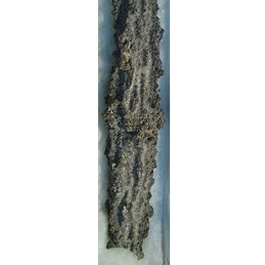 Gem Profile- Fulgurite
Gem Profile- Fulgurite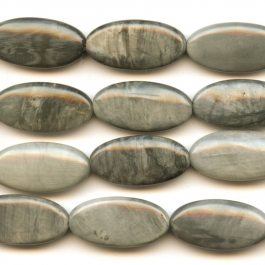 Gem Profile- Cat's Eye
Gem Profile- Cat's Eye Gem Profile- Carnelian
Gem Profile- Carnelian Gem Profile- Petoskey Stones and Indonesian Fossil Coral
Gem Profile- Petoskey Stones and Indonesian Fossil Coral Gem Profile- Rutilated Quartz
Gem Profile- Rutilated Quartz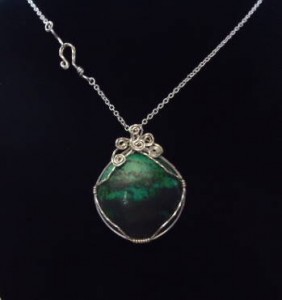 Gem Profile- Chrysocolla
Gem Profile- Chrysocolla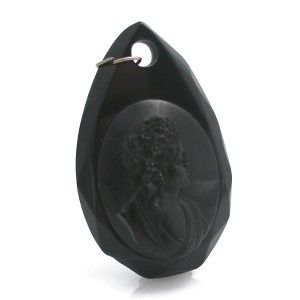 Gem Profile- Jet
Gem Profile- Jet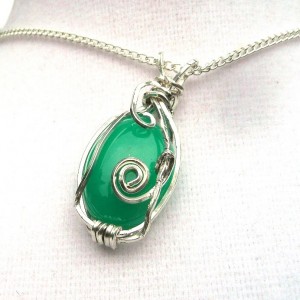 Gem Profile- Chrysoprase
Gem Profile- Chrysoprase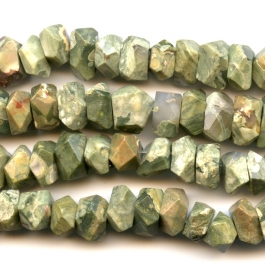 Gem Profile- Rhyolite
Gem Profile- Rhyolite Gem Profile- Chalcedony
Gem Profile- Chalcedony Gem Profile- Lepidolite and Sugilite
Gem Profile- Lepidolite and Sugilite Gem Profile- Unakite
Gem Profile- Unakite Gem Profile- Cowrie Shells, Conch Shells, and Drilling Shells
Gem Profile- Cowrie Shells, Conch Shells, and Drilling Shells Gem Profile- Mother of Pearl
Gem Profile- Mother of Pearl Gem Profile- Moss Agate and Plume Agate
Gem Profile- Moss Agate and Plume Agate Gem Profile- Thundereggs and Mexican Lace Agate
Gem Profile- Thundereggs and Mexican Lace Agate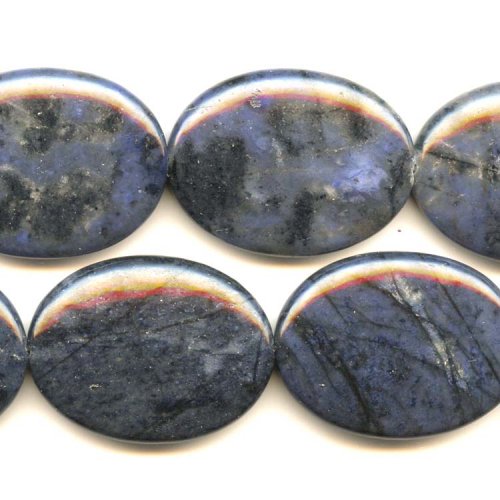 Gem Profile- Dumortierite
Gem Profile- Dumortierite Gem Profile- Apatite
Gem Profile- Apatite Gem Profile- Blue Topaz
Gem Profile- Blue Topaz Gem Profile- Aragonite
Gem Profile- Aragonite Gem Profile- Zircon and Cubic Zirconia
Gem Profile- Zircon and Cubic Zirconia Gem Profile- Topaz
Gem Profile- Topaz Gem Profile- Howlite
Gem Profile- Howlite Gem Profile- Sodalite
Gem Profile- Sodalite Gem Profile- Magnesite
Gem Profile- Magnesite Gem Profile- Cuprite
Gem Profile- Cuprite Gem Profile- Nuummite
Gem Profile- Nuummite Gem Profile- Bronzite
Gem Profile- Bronzite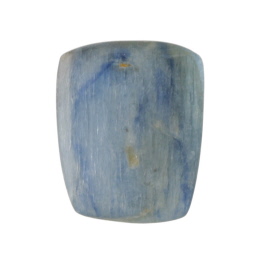 Gem Profile- Kyanite
Gem Profile- Kyanite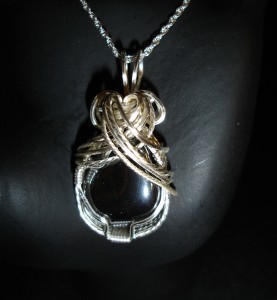 Gem Profile- Hematite
Gem Profile- Hematite Gem Profile- Derbyshire Blue John
Gem Profile- Derbyshire Blue John Gem Profile- Eilat Stone
Gem Profile- Eilat Stone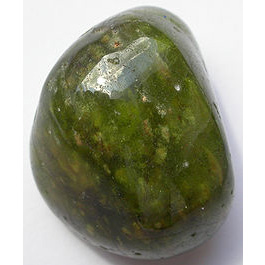 Gem Profile- Vesuvianite
Gem Profile- Vesuvianite Gem Profile- Strontium Titanate -Fabulite
Gem Profile- Strontium Titanate -Fabulite Gem Profile- Tourmaline
Gem Profile- Tourmaline Gem Profile- Larimar
Gem Profile- Larimar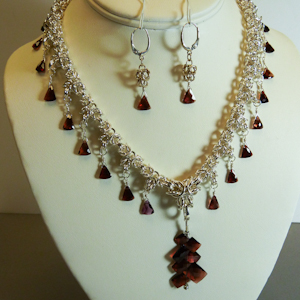 Gem Profile- Garnet
Gem Profile- Garnet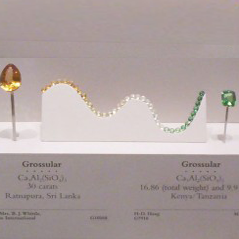 Gem Profile- Tsavorite and Green Garnets
Gem Profile- Tsavorite and Green Garnets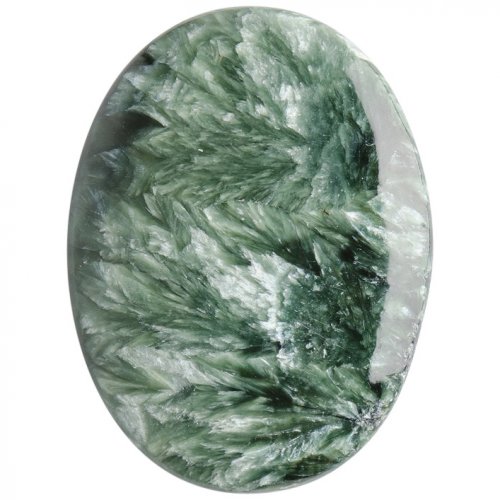 Gem Profile- Seraphinite
Gem Profile- Seraphinite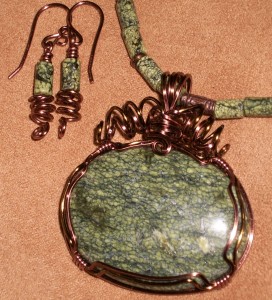 Gem Profile- Serpentine
Gem Profile- Serpentine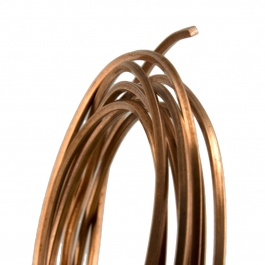 American Wire Gauge
American Wire Gauge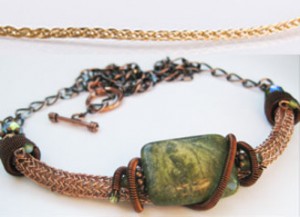 Viking Knit and Spool Knit Chain
Viking Knit and Spool Knit Chain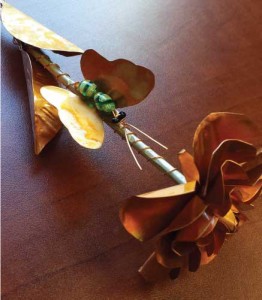 Copper Roses
Copper Roses How to Make Medical ID Bracelets Special
How to Make Medical ID Bracelets Special Remembering the Fallen
Remembering the Fallen 6 Ways to Find Your Uniqueness in Jewelry
6 Ways to Find Your Uniqueness in Jewelry Gem Profile- Moissanite
Gem Profile- Moissanite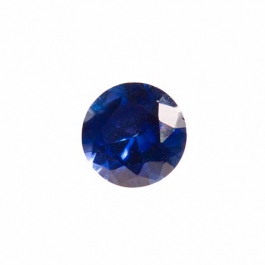 Birthstone Swarovski Colors
Birthstone Swarovski Colors Gem profile- Paua and Abalone
Gem profile- Paua and Abalone Tips for Tucson Shopping- Gem Show Secrets
Tips for Tucson Shopping- Gem Show Secrets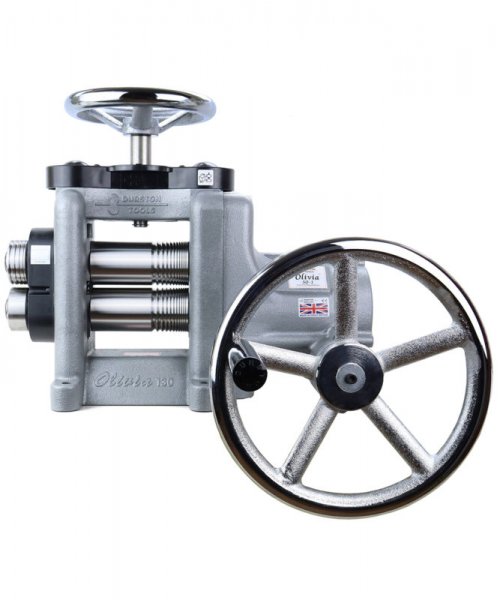 Durston Olivia Rolling Mills
Durston Olivia Rolling Mills How to Use a Jewelry Bench Polisher Effectively
How to Use a Jewelry Bench Polisher Effectively 
